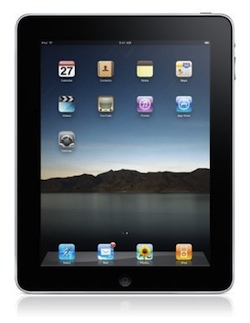 Been havin' a lot of fun with my iPad this this week, so much so that I almost forgot to post
Been havin' a lot of fun with my iPad this this week, so much so that I almost forgot to post
this. I started asking my local developer friends (some of them clients) what their thoughts were on the new device almost as
soon as I got mine last Saturday. So I’ve had this post brewing for several days
now. Then, I’m finally about ready to post it, and Apple goes and
holds its “sneak-peek” media event Thursday. So, natch, I had to ask
some of them for their reaction to that, too.
Here we go, then — five experienced Minnesota mobile app developers
tell me, straight up, what’s up with iPad as relates to them. And,
after that, I include some great insights from a couple of them about
iPhone OS 4 — coming this summer for the iPhone, and soon after for the
iPad. (Bring it on, Uncle Stevie!)
Joe Sriver, Founder, DoApp Inc. Joe, will your company be
developing iPad apps? 
“Yes, we do have plans for the iPad,
first for our real estate product, then our other products. No ‘made for
iPad’ apps are in the store from DoApp on day one, though. But I did
preorder an iPad for the team.” In a story our friend Julio
Ojeda-Zapata wrote in the PioneerPress on April 2, we learned that DoApp
was frantically at work on the iPad version of it’s “Home Kenex” app,
which is for home buyers and real estate agents. Maps can be positioned
alongside lists or photos of homes to make navigation easier and more
intuitive than the cramped iPhone screen allows, said the story,
facilitating better house comparisons. iPad becomes “a coffee
table-type of thing, with people in their agents’ offices cruising for
properties on the device,” said the story, quoting DoApp’s Wade
Beavers. GPS capability will be added in an upcoming version of the
iPad, so home buyers or agents will be able to pull up listings in their
vicinity and “drive effortlessly towards them using satellite
navigation.”
Bill Heyman, Founder and Lead Developer, CodeMorphic.
Bill, what apps are you doing for iPad? Redoing any of your
existing ones?
 “No existing apps. What we’re doing are new ones for various
“No existing apps. What we’re doing are new ones for various
clients. Unfortunately, I’m not at liberty to say what they are. I’m
also working on a new game app I’m publishing myself, but I’m not ready
to submit it yet. I’ll let you know when it’s getting close.”
I assume you now have an iPad in your possession? “Yes, I
had one delivered to me while on vacation in Arizona this week.”
What are you finding in regard to how well your iPhone apps work
on iPad? “They seem to work fine.
”
What about landscape mode? Are you concerned that apps should
work either way on iPad? “Apple has basically told developers that
they MUST support rotation in their iPad apps. Unfortunately, it can
be a major PITA to support it well, but developers are going to have to
bite the bullet now.
”
Any other comment? “I think iBooks is the killer feature of
the iPad. There’s been talk about the iPad developer gold
rush, but no discussion about the author and independent content
provider gold rush. It’s going to happen — and I think it could be
every bit as exciting as some of the apps.”
Matt Bauer, Founder, PedalBrain.
Does the iPad fit in at all regarding your app? “Yes, it does —
from a coaching or team director standpoint, to track athletes.” 
I guess iPad isn’t too “mobile” as relates cycling, huh?
“It will be a new application than what we have. Likely a different app
that we will charge for — probably like $20 or so. I really see iPad
apps being sold for quite a bit more than for the iPhone. It won’t be
till late summer we will think of doing an app.”
Your current app, of course, would work on the iPad, right?
“App, yes — but hardware, no. Apple hasn’t given the okay for iPad
accessories from third parties yet. Once they do, our hardware
accessory will work.”
Terry Anderson, Founder, Handcast Media Labs.
What’s up with you and iPad? “We also got our first iPad on
Saturday. We’re within a few days of having our next release of the
SparkRadio app, which will  work on either iPhone or iPad. In the
work on either iPhone or iPad. In the
future, we will optimize a version for iPad that takes advantage of the
increased screen real estate in a cool way, but that’s further out
(maybe 45-60 days). The visualizer screens on the iPad are stunning in
full screen mode.”
Did I hear you dropped your price
for SparkRadio on the iPhone from $5.99 to $1.99? “The price drop
is temporary and is part of our experimenting with promotional tactics
and pricing to see the effect on demand.
“Ultimately, we’re likely to end up with this scenario: A free
version called Spark Radio Lite that will be full featured, but will
only stream 200 selected stations (maybe two weeks away)
… A full
version that will sell for between $5 and $6 (ultimately 30,000
stations) – so the price drop is temporary… And note that both versions
will support iPhone and iPad equally – the software will detect the
device and will load the appropriate interface… And we may come up with
an enhanced iPad version, which could be sold as a separate product, but
that’s down the road and still undecided. Now that I see SparkRadio on
the iPad, I can imagine a scenario where the iPad is docked in a stereo
(many companies make them for iPhone and I assume we’ll see them
shortly for iPad), and Spark is streaming audio and providing a pretty
cool lightshow. We think this will be a great way to expose the product
and the graphics to a larger audience. Very excited.”
Bekki Freeman, Developer, TinyMission.
Please tell us about your firm’s experience, what kinds of apps you
do, and what types of clients you work with. 
“Tiny Mission started as an iPhone
app development company. Because of the high demand for applications,
and especially integration between web apps and mobile apps, we’ve
expanded to other mobile platforms, including iPad, and are eager to
integrate these with enterprise systems. Two of our clients are On Impact
Productions and Fraser.
We work with both small and medium-sized companies, writing apps to
enable their corporate and customer visions.”
How many apps have you published, and in what categories, for
iPhone and other platforms? “Tiny Mission has published one iPhone
application for On Impact Productions, and is preparing to submit a
second for them this month, in addition to a BlackBerry and Android
application. We are submitting two iPhone applications for Fraser this
spring, and are part way through development on an enterprise
application that will be centered around the iPad.”
What are your plans for iPad apps, and what do you see as being
different or challenging compared to iPhone? “We are very excited
for the iPad because of the endless possibilities for very feature-rich
applications. The iPhone has been great for enterprise, but it is just
too small to do complex business tasks. We plan to bring web apps,
smart phones, and the iPad together to fully integrate our clients’
business applications. Our vision is for our clients to answer all of
their customers’ questions and needs without ever going to a desk.”
——-
So, enter the Apple sneak-peek media event on Thursday.
CEO Steve Jobs outlined what’s coming in the next version of the iPhone
operating system, called OS 4. He highlighted seven new features:
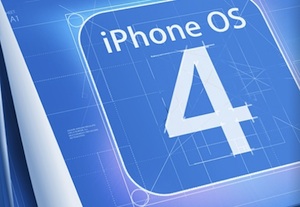 • Multitasking
• Multitasking
• Folders to organize apps
• A unified inbox
• iBooks is coming to the iPhone
• More features for the enterprise
• A social network for gaming
• Mobile advertising with iAds
I asked Bill Heyman of CodeMorphic, What’s your reaction to the
iPhone OS 4 sneak-peek announcement yesterday? “Multitasking is a
great feature, of course, but still keeps the iPhone OS in control — to
prevent bad apps from monopolizing the feature. It’s probably not enough
for real-time, time-critical apps for the iPhone, but it’s a step in
the right direction. Apple’s drawn a line in the sand for how apps are
developed — Adobe Flash, Corona, and other platforms appear to be
screwed, as they’re currently architected. Basically, Apple wants
native apps to use native code (Objective-C, C++, C, JavaScript). So,
for these other development platforms to survive, they’re going to have
to ultimately be code generators for code types that Apple approves. I
suspect Apple is following up the release of the iPad with the new
iPhone OS to maintain momentum and to blunt criticisms of the iPad (and
iPhone) as new Android-based tablets and phones start to appear in the
next few months.”
I also asked Bekki of TinyMission, What are your impressions of
iPhone OS 4? “Obviously, multitasking is huge. We’ll be able to
offer our clients’ users so many more options for delivering
functionality, such as location-based notifications. Local notifications
will give many of our small business clients the ability to offer
reminders and user-specific content without having to manage external
servers and user databases. We believe our clients will really benefit
from the new enterprise features. The agility and flexibility of
wireless enterprise app distribution and the improved data encryption
are very exciting. By breaking down barriers to enterprise deployment,
Apple is opening up a whole new market segment with opportunities for
companies like Tiny Mission to expand into.”
Finally, I wanted to ask Joe Sriver
of DoApp about the *other* announcement that came out at Apple’s media
event yesterday — that being their “iAd” platform — in light of DoApp
having its own such 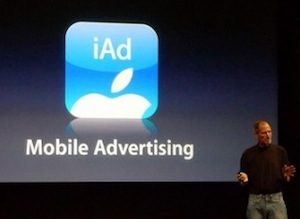 platform, called “Adagogo.” Joe, what’s your
platform, called “Adagogo.” Joe, what’s your
reaction to Apple’s “iAd” announcement?
“iAd sounds like a good product. I haven’t delved too deeply into
it. It’s another network that we will look at adding to our Mobile
Local News platform. I guess I don’t see it as a big competitor to
Adagogo, since Adagogo is built into our products by default. It will
become more of a competitor if we release an Adagogo API for developers
to add Adagogo ads into their apps. Obviously, it’s a potentially big
threat for Google and Admob — or both together if that deal ever goes
through. Google has the resources to compete, so I’m not going too
worried about them!” Nice touch, Joe — spoken as a loyal former
employee of Google…
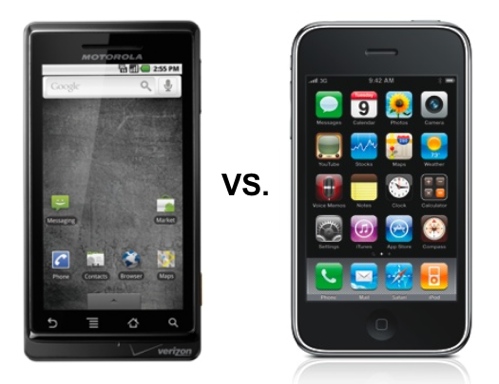
![Reblog this post [with Zemanta]](https://img.zemanta.com/reblog_e.png?x-id=8ce62b21-01cb-4748-94c9-9b2983f65ebd)


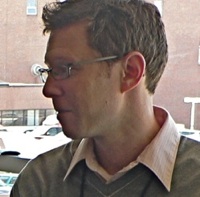
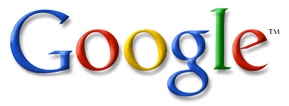 [I had the privilege of meeting Larry Page at a conference in March 2002, when the company had fewer than 200 employees. Still mad I didn’t slip him my resume.]
[I had the privilege of meeting Larry Page at a conference in March 2002, when the company had fewer than 200 employees. Still mad I didn’t slip him my resume.] 
Recent Comments